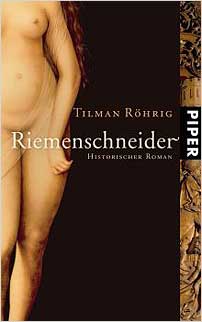review
At the heart of this story is the relationship between the great German renaissance gothic stonemason and wood carver Tilman Riemenschneider and a peasant woman, Magdalena, whom he meets by chance and who agrees to model for him for his first major commission, the figures of Adam and Eve for the entrance to the Marienkapelle at Würzburg. The year is 1492. The unveiling of the completed figures causes great shock amongst the burgers of the town since the figure of a naked Eve is at that time unheard of in ecclesiastical works of art in Germany. A lifelong bond forms between artist and model, and when Magdalena’s husband is so badly beaten up by the local landowning bishop’s henchmen for failure to pay his tithes that he dies, Riemenschneider arranges for Magdalena and her child to be taken in by friends of his in the town.
Years pass. Riemenschneider, now married and with children, is elected to the town council following his great success, and is anxious not to jeopardise his standing in the town at a time of great religious upheaval by allowing his platonic relationship with Magdalena to develop further, obviously attracted to each other though they are. His second wife dies, but as a member of the middle class he can no longer marry a lowly peasant woman. Accordingly, in despair, Magdalena unites herself to one of his assistants.
The plot follows the beginnings of Luther’s Reformation. Luther himself, Savonarola and various other notable personages are introduced, as are such important historical events as the Bundschuh movement and, in particular, the Peasants’ War of the 1520s, during which the sculptor finds himself imprisoned and tortured. He recovers, however, and dies peacefully one day while he and Magdalena are visiting his vineyards.
So, plenty of historical insights from a relatively unknown but unusually interesting period. The detail is impressive and excellently handled, and in addition to the main theme of a suppressed but solid love there is much additional, secondary incident: for instance, the fortunes of Riemenschneider’s son, who marries Magdalena’s daughter but is himself a waster and gambler led astray by one of the disreputable town musicians. A feast of a read with potential appeal both in Britain and the United States.



All recommendations from Autumn 2007